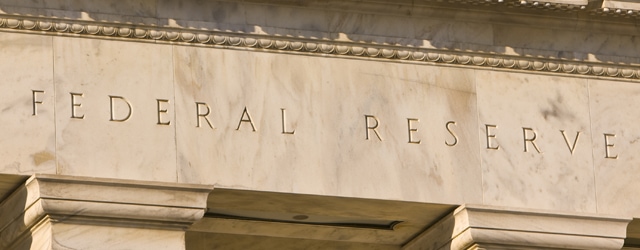Shrinking its behemoth balance sheet has the potential to create huge market distortions, so the Fed is moving very slowly and signaling carefully.

The Federal Reserve’s planned balance-sheet runoff from $4.5 trillion at present to roughly half that level in the next five years will tighten financial conditions, and could delay some rate increases, analysts say.
“Shrinking the Fed’s balance sheet will have a profound impact on US financial markets, just as did large-scale bond purchases,” says Frederick Cannon, global director of research and chief equity strategist at investment banking and brokerage firm Keefe, Bruyette & Woods. “However, as with bond purchases, the timing of the impact on bond yields is nearly impossible to predict,” he wrote in a recent note.
The Fed provided some guidance in the minutes of the March Federal Open Market Committee (FOMC) meeting, which stated: “Most participants anticipated that gradual increases in the federal funds rate would continue and judged that a change to the committee’s reinvestment policy would likely be appropriate later this year.”
Rather than selling its massive holdings of Treasury securities and mortgage-backed securities outright, which could cause panic selling in the markets, the Fed is expected to begin by allowing a portion of maturing securities to roll off.
If the Fed stopped reinvesting principal payments, the mortgage-backed and agency portfolios would drop by approximately $320 billion a year, according to a report from the Institute of International Finance, written by Ulrik Bie, chief economist, and Jonathan Fortun, research analyst in the global macroeconomic analysis department. Reducing the size of the Fed’s balance sheet is likely to contribute to a tightening of financial conditions that will translate into “synthetic rate hikes” by the end of 2018, they say, reducing the need for actual rate increases.
“Signals to the market must be carefully considered and efficiently timed,” the IIF report states. “However, a coherent communication strategy could be challenged soon, as President Trump fills the three vacant spots on the Federal Reserve Board.”
The Fed is keenly aware that it caused a “taper tantrum” in the markets in 2013, when it signaled an end to its asset purchases. Therefore, it is preparing the markets well in advance for the next step in its normalization policy.
The largest risk to financial stocks from a reduction in the Fed’s balance sheet is a widening of credit spreads, which would raise borrowing costs, according to Keefe, Bruyette & Woods.
FOMC minutes indicate that “many participants emphasized that reducing the size of the balance sheet should be conducted in a passive and predictable manner.”
In a speech at the Brookings Institution earlier this year, former Fed chairman Ben Bernanke said: “By allowing the balance sheet to shrink passively over a number of years, without active selling, the FOMC aims to maximize predictability and minimize potential market disruption.”
The FOMC could respond to evolving conditions by restarting reinvestment at some point, or it could vary the pace at which reinvestment is phased out, Bernanke says. “I worry that in practice attempts to actively manage the unwinding process could lead to unexpectedly large responses in financial markets, particularly if market participants (as in the taper tantrum) were to take a strong signal about future rate policies from changes in the balance sheet’s trajectory.”



